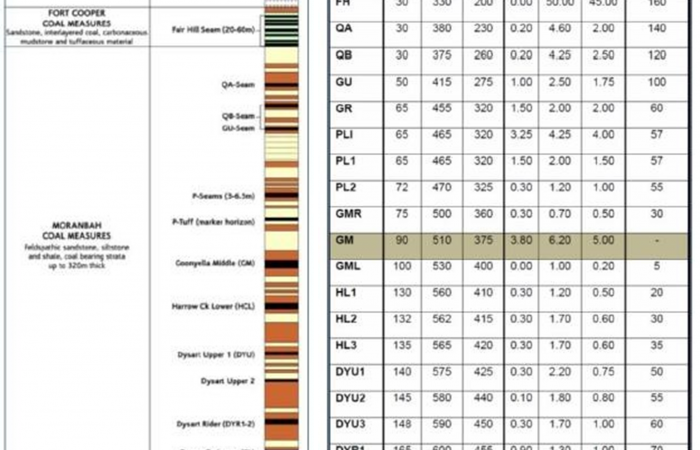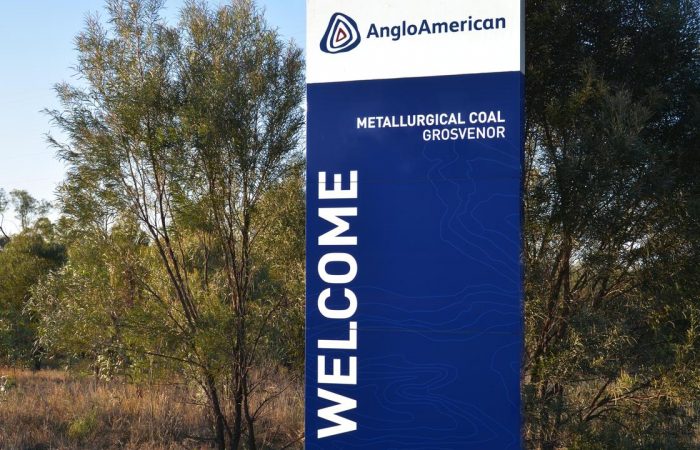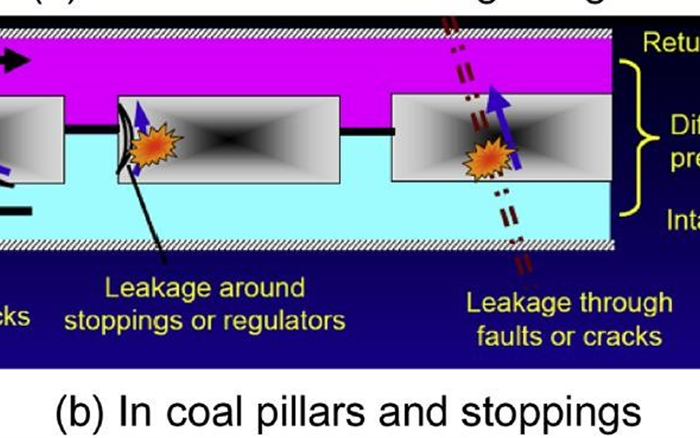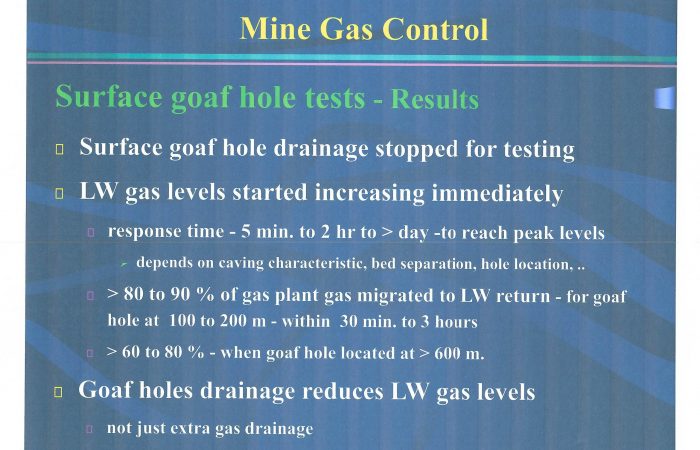
LW Methane Drainage Boreholes. Part of the Solution or Part of the Problem?
The question of whether the gas drainage boreholes in Longwall Goaves are contributing to the number of spontaneous combustion heatings, fires and explosions plaguing the Queensland Underground Coal Industry, needs to be asked and considered.
The mine ventilation system must and should be designed to deal with the methane released as part of the mine operation. this includes
- Methane from rib, floor and roof emissions in intake roadways.
- Methane generated when the coal is cut and broken and methane is desorbed at the face and also while on the conveyor belt system.
- Methane emissions from Goaf.
- Methane from rib, floor and roof emissions in return roadways.
There also needs to be a factor of safety included so that the system is not operating normally just below 1.25% Methane.
In the Goaf the methane is generated by remnant seam coal desorbing its gas and any methane released by rider seams in the immediate floor and the roof.
As an example as in the Goonyella Middle Seam. If 2 metres of coal are left with a residual gas content of 5m3/tonne and the face is 300 metres wide then each metre of retreat will generate 3000 cubic metres of methane over time.
To keep uncontaminated intake air below 1.25% will require 240, 000 cubic metres or if for some insane and illegal reason you went with 2.5% would require 120,000 cubic metres of intake air.
As the roof caves methane is released from immediate floor seams and from seams of coal in the roof broken by the caving of the goaf
The rider seams gas emissions in the goaf will naturally report to the tailgate of the longwall goaf as it it enters a “steady” state with emissions.
For the sake of simplicity let us assume that the rider seam emissions are 5m3 of methane per second and there are no goaf drainage holes.
If there was 50m3 of intake air per second on the face then goaf methane would make up 1 tenth of the ventilation or 10% and would therefore have a concentration of 10% methane.
That is obviously totally unacceptable.
The obvious answer is to drain the gas before mining takes place, which above all often takes a couple of years of lead time.
If as in Grosvenor you do not drain the floor seam or Goonyella Upper seam the methane released will be from virgin coal.
The problem with using boreholes in the goaf is that for every cubic metre of methane extracted via boreholes it has to be replaced which draws intake air and oxygen into the goaf.
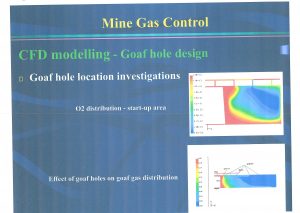
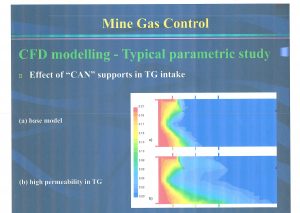
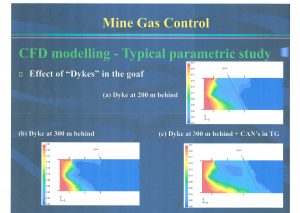
At 4% Oxygen which Mr Baluso recommends as an upper trigger point for stopping gas flow, this represents one fifth or 20% of the normal Oxygen level or air.
In other words air makes up 20% of the atmosphere at the goaf borehole.
If for some reason the limit is set at say 10% Oxygen then normal atmosphere makes up 50% of the goaf atmosphere at that point..
So what you say.
Well Oxygen does not just magically appear via Star Trek style Transporter.
It has to migrate through the goaf.
Once out of the immediate goaf flush area the flow of gases migrates from a turbulent flow of around 0.5m/s down to 0.02 m/s deep in the goaf of up to 1ooo metres.
At lower speeds the flow is no longer turbulent and becomes more laminar.
The goaf is at a higher temperature that the intake air and is less dense than normal air.
This will result in the laminar flow paths with intake air flowing into the goaf.
This creates a source of Oxygen and spontaneous combustion.
The deeper the drainage boreholes in the goaf and the greater the numbers, the more Oxygen is drawn in over time increasing the chances of spontaneous combustion.
In my opinion the lack of proper pre-draining of the coal seams along with demands for ever increasing production rates and longer and wider longwalls is resulting in the mines creating a self induced spontaneous combustion problem from trying to solve a gas make problem totally of their own making.
This needs to be considered with regards to events following the Mines Department crackdown on what is a Methane HPI > 2.5% Methane.
I will explore this more fully in another post.
I have extracted a number of statements from the Baluso Power Point that I will reference.
For those working at Underground Mines ask yourself this how well does your mine comply with these
- Sponcomb rate – high near geological disturbances – faults
- CO production depends on – ventilation, permeability, ..
- Oxygen in goaf holes – to be less than 4% O2 – preferably
- Cut-through’s behind the face – to be closed as soon as possible
- Reduced intake airflow (+ less pressure differentials)
- Goaf holes away from faults/dykes
- Continuous monitoring of CO + O2 behind (200 m) the face
Tracer gas studies were also carried out to map the inert gas dispersion patterns in the goaf. During these field studies surface boreholes were drilled into the goaf and an extensive gas monitoring system, with sampling from 12 locations in the goaf, was implemented to study the changes in goaf gas distribution over a wide area during inertisation.
Page 15
SF6 reliable tracer gas – detected at all sampling locations
He – detected at only few locations + interpretation difficult due to background levels present in coal mines
Detection times varied from 2 minutes to 10 hours.
Gas detected even at 1,000 m behind the face in 10 hours
Goaf gas flow velocities at various locations calculated varied from 0.02 m/s to 0.5 m/s
Used for calibration of CFD models
Slide 18
Oxygen penetration
more on intake side – varies
gas layering – buoyancy effect
Slide 27
- Sponcomb rate – high near geological disturbances – faults
- CO production depends on – ventilation, permeability, ..
- Oxygen in goaf holes – to be less than 4% O2 – preferably
- Cut-through’s behind the face – to be closed as soon as possible
- Reduced intake airflow (+ less pressure differentials)
- Goaf holes away from faults/dykes
- Continuous monitoring of CO + O2 behind (200 m) the face
Previously the Newlands Mine did not have to have a need for goaf gas drainage and he describes the Mine
.Page 9
The panel orientation was such that the tailgate was at a higher elevation than the maingate. Methane gas emission in the panel was low at the rate of about 300 l/s and there was no need for a goaf gas drainage
The gas content of the coal seams ranges from 4 m3/t to 10 m3/t and consists mostly of CH4 gas. The mine employed a long hole pre-drainage system and was able to extract a higher proportion of the in-situ gas before longwall extraction due to high permeability of the coal seams in that region, which ranges from 10 to 30 millidarcy (md). Therefore, goaf gas emissions in the longwall were relatively lower, ranging from 100 l/s to 500 l/s.
The mine did not employ any post-drainage system in the longwall panels. All the predrainage holes were connected to a surface borehole and pre-drainage gas blows out to the atmosphere with positive pressure. No gas drainage plants were installed at the mine. Seam gas pressure and high gas desorption rate seemed to be high enough for free venting of the pre-drainage gas.
